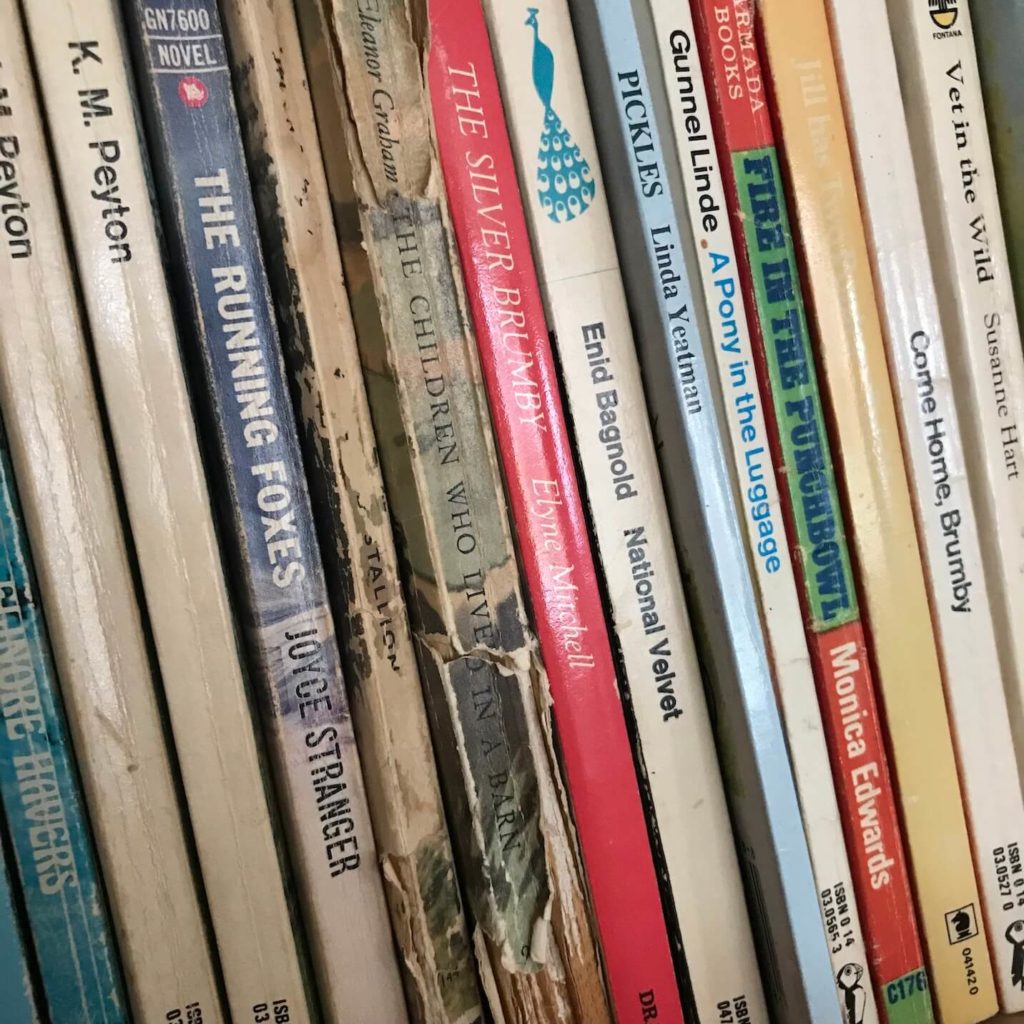

Once upon a time… how do you feel when you hear or read that? Are you immediately transported to a memory of sitting down cross legged on the school carpet? Or a memory of being tucked up in bed at night by a parent? Or a memory of sitting around a campfire with friends? Humans have been telling each other stories for 1000s of years as a way of recording memories and history, sharing knowledge and information as well as building and strengthening relationships. Everybody has a story to tell or stories of their experiences to share and as it is National Storytelling Week this week, I wanted to have a think about how stories can be used in the workplace.
Storytelling perhaps isn’t a skill immediately associated with work, but if you think about it, telling stories is just another form of communication – and it can be a very effective one. To explore this theme, I invited my friend and colleague Isabel Pollen along, Isabel has been telling stories her whole life, either as a professional actress or more recently as a qualified coach and facilitator. We started off by discussing why we tell stories…
Helen: So, Isabel, why do we tell stories?
Isabel: We are hard wired for stories, there is a famous quote from Brene Brown which explains it very well “stories are just data with a soul”, in our world today, we have endless options when it comes to communication. Stories are a short cut to the soul when it comes to creating an emotional connection with our audience.
Helen: Why are stories important?
Isabel: If we think about pivotal moments in our life, inevitably they start with story. Why? Because throughout our survival as human beings, stories have been used and shared to keep us alive. I am the eldest of 7 children and my mother is Irish so you can imagine how many stories I have been privileged enough to hear from the moment I was born. This is true for all of us. It is a fact that I have become much more aware of since becoming a performer. In our working lives, we tend to go straight for the jugular when it comes to task focused jobs. We can forget that the most effective way to engage whoever we are wanting to influence is to start with story. To start with a story that is relevant to them, after all Maya Angelou said “I’ve learned that people will forget what you said, people will forget what you did, but people will never forget how you made them feel”
Helen: How could we use stories in a business context?
Isabel: As with any skill, telling stories takes practice. If you think now about a story that you have told many times, in different situations, with different audiences, you will feel an instant comfort with the telling of that story. When it comes to business, we feel less comfortable because often (not always) we are less familiar with the purpose of that story. So, how do we use stories when we are less familiar with the context? Practice. As an actress, the idea of rehearsal and the mindset that goes with that means that I am very comfortable with practicing the stories that I tell. Over the years, and during the process of becoming a coach, I realise how valuable this can be for those of us that are less practiced.
There are many resources out there for hundreds of approaches to storytelling. This is also true when it comes to structuring story. My main offer to you in this blog is that the three most important things to know are:
- Why tell the story now?
- What’s in it for the people listening?
- How do I want them to feel after I have shared my story?
In a business context, stories can be used as and when they are needed. It always comes back to the three questions above and consciously seeking opportunities to tell stories for example, during (or at the start of) meetings, throughout presentations, remote calls and obviously endless opportunities when it comes to influencing internally too.
When it comes to risk management, health and safety is a major factor. There are a myriad of stories out there that could be coined as ‘horror stories’ recounting events that have happened to individuals. The trap we have to be wary of, is simply telling the story for dramatic effect. Our stories always have to sit in the context of that specific audience.
Helen: What are your top tips for telling a story?
Isabel:
- Always set the context – where and when this story happened, remember you don’t need much detail at this point, for example when speaking about motivation, I will use a story connected to a time when I’ve been motivated, or not (!) – depending on the impact I want to have
- Decide what The Most Important thing is to the audience (not to you, your Most Important Thing might be different) and then remember “The Most Important thing is to keep The Most Important thing as The Most Important thing” [works better if you read it out loud!] For example, when I’m coaching a team in hospitality about engaging their audience, I have to be aware of the constraints of their working environment and focus on stories that relate specifically to that
- Have a villain / struggle (a problem, an issue, or in a risk management context, perhaps an accident)
- Have a hero (a solution, a product, a person)
- Introduce conflict – the best stories always start with conflict, for example James Bond… we never see James Bond lying on a sunbed with a beautiful woman at the beginning of the film… we see him hanging out of a helicopter! Conflict is what gets us hooked as an audience
- Raise questions – what will happen next? Again, we must do our best to keep our questions relevant to our audience, rather than the questions we want answered
- Have a clear conclusion – why are you telling this story? What do you want your listeners to take away from it? What do you want your audience to do differently? i.e. the ‘call to action’
Helen: What ‘shape’ should a successful story have?
Isabel: Let’s remember when it comes to storytelling, the definition of success is, has the story hooked your audience in such a way that they are inspired / challenged / engaged enough to take action?
With this in mind, the shape of a story really depends on the effect you want to have on your audience. Let’s use a story we are all familiar with as an example… Goldilocks and the Three Bears. The start of this story lulls us into a false sense of safety. Goldilocks has found an exciting empty house, which she starts to explore in the hope that she’ll find comfort. We all know what happens next. The reason I use this story as an example is that it is a brilliant and simple shape that leads us to understand why the story matters. Why do I say this? I say this because, without the bears coming home, it would be a relatively dull story. The shape created by the conflict of the bears arriving back whilst Goldilocks is asleep is exactly what we mean when we talk about that all important conflict. The shape of a story needs to reflect the impact and feelings that we wish to create in our audience. It’s really important to remember that there is no one shape to stories. It’s definitely not a case of one size fits all when it comes to storytelling. The more we practice telling stories, the more we understand which shapes work and why.
Finally, its important to highlight how essential it is for our audience to be invested in the struggle of our story so that when we present solutions to that struggle, they emotionally connect to the benefits of those solutions. Otherwise, it can all stay very much in our heads. So, always get curious about your audience’s struggles first, and shape your story starting with that.
Thank you for sharing your thoughts Isabel – it’s been fascinating talking to you!
If you are interested in finding out more about using storytelling in your business, Isabel and I have collected together some resources you might find useful:
Course: Fieri provide workshops focusing on communication skills: Standalone Workshops
Helen’s book recommendation: Do Story – how to tell your story so the world listens
Isabel’s book recommendation: The Science of Storytelling
Information Sheets from the Society of Storytelling: Storytelling in Business and Storytelling in Organisations
Film: Deepwater Horizon Telling the story of the Deepwater Horizon disaster which captures ‘cheese hole theory’ with horrifying clarity
IOSH Article: The Power of Storytelling